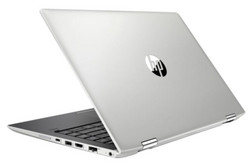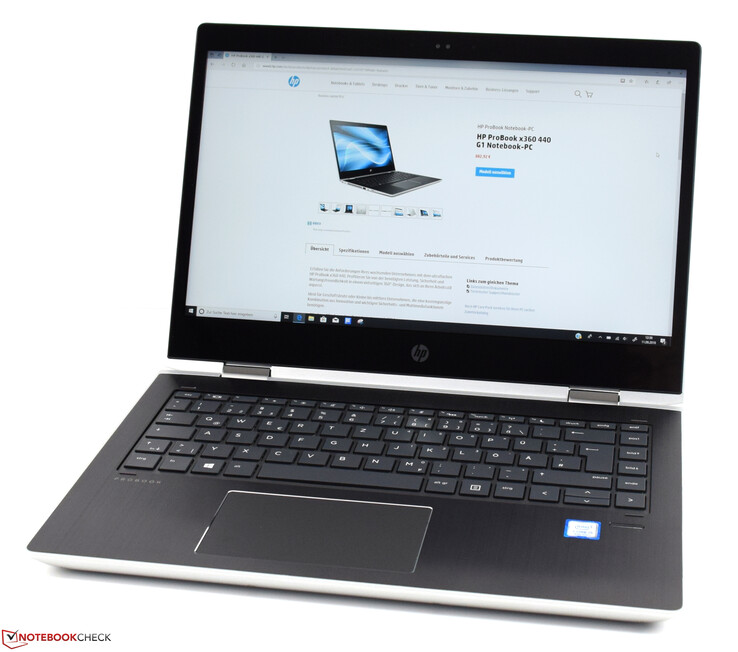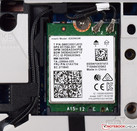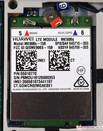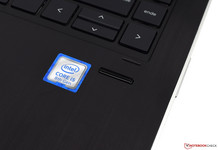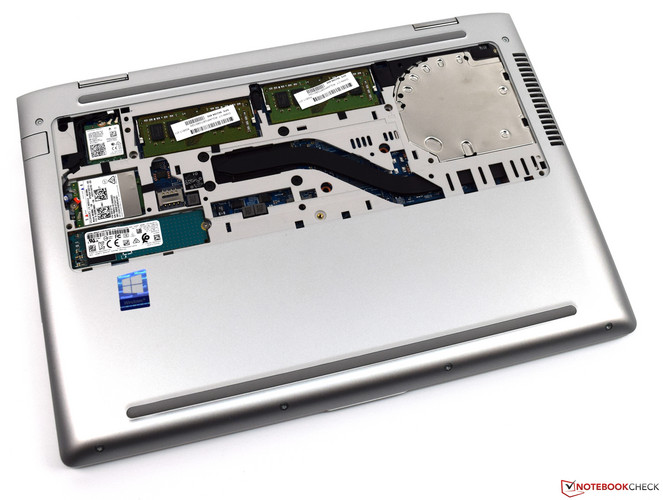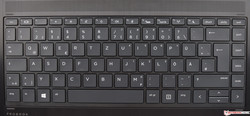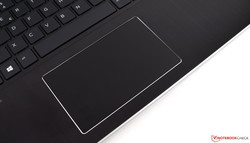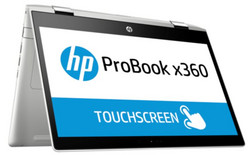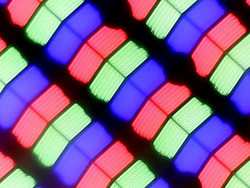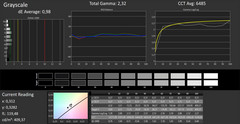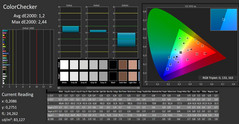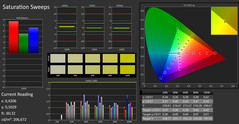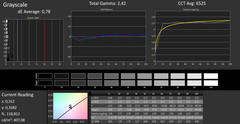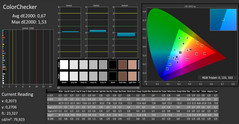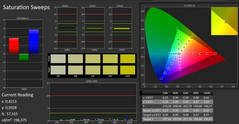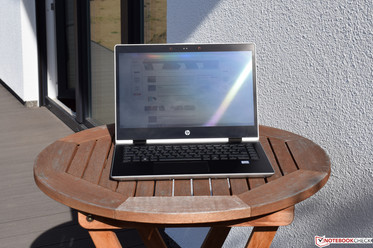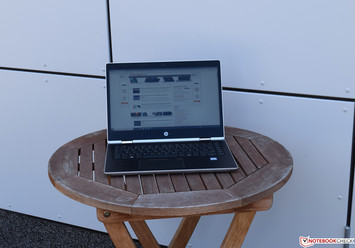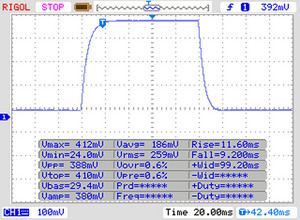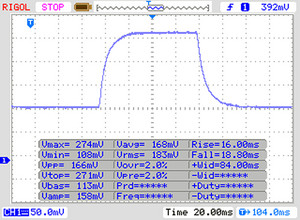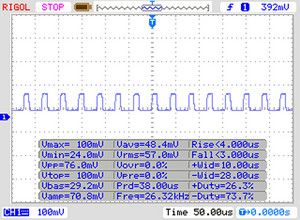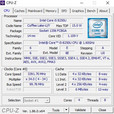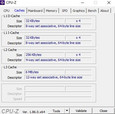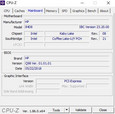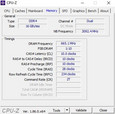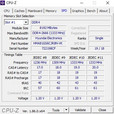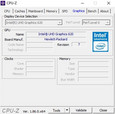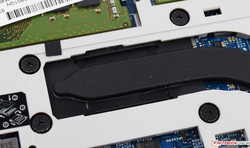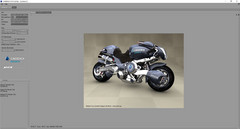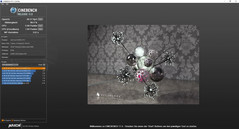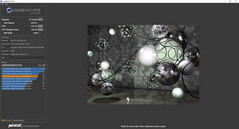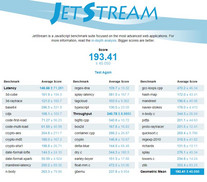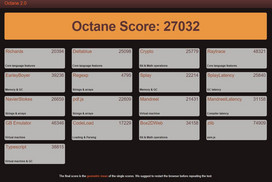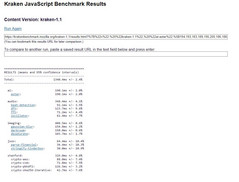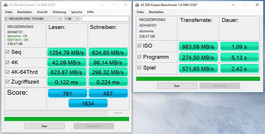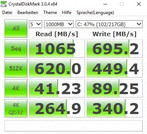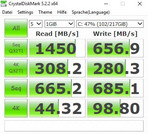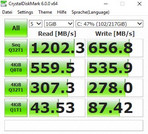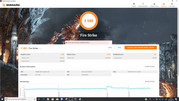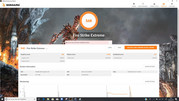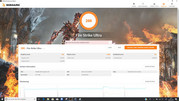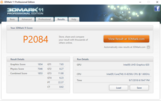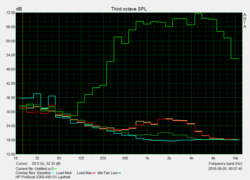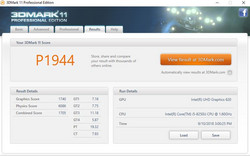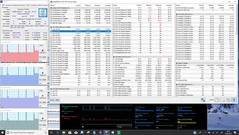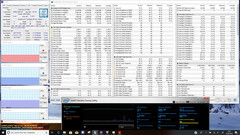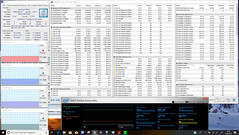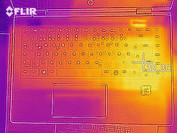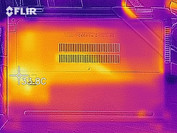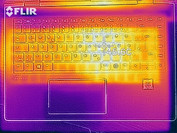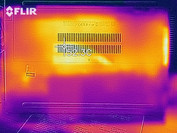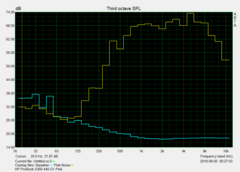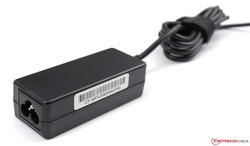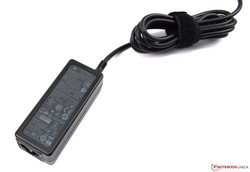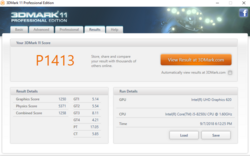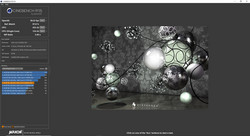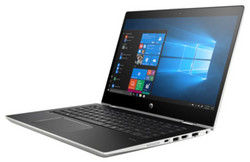HP ProBook x360 440 G1 (i5-8250U, 256GB, FHD, Touch) Convertible Review

HP has expanded its convertible offerings with the ProBook x360 440 G1, an affordable convertible that costs just under €900 (~$1060) at the time of writing. The x360 440 G1 is a bargain when compared to HP’s considerably more expensive Spectre x360 and EliteBook x360 series.
HP has designed the x360 440 G1 to appeal to professionals and small to medium-sized businesses, something which the device’s relatively affordable pricing reflects. Moreover, the x360 440 G1 offers a good combination of performance, versatility, security and multimedia features.
HP equips the device with only a choice of Intel processors, the cheapest of which that OEMs currently use are either the Intel Pentium Gold 4415U or the Intel Core i5 7200U. However, the most basic configuration of the x360 440 G1 has an Intel Core i3-8130U, which HP currently prices for around €880 (~$1036). The device can also be configured with up to an Intel Core i7-8550U, the variant of which currently costs around €1,250 (~$1471). Moreover, there are options for up to 512 GB of solid-state storage and an NVIDIA GeForce MX130 that has 2 GB of dedicated VRAM. HP recently announced that they would be selling the x360 440 G1 with an Intel Core i5-8350U too, but they have not announced the pricing for this new variant at the time of writing.
Our test device sits within the mid-range of these offerings and is equipped with an Intel Core i5-8250U CPU, 16 GB of DDR4 RAM and a 256 GB NVMe SSD. This variant currently costs around €999 (~$1176); all variants come with the same 14-inch Full HD IPS touchscreen display.
We have chosen to compare our test device against five other devices that we have already tested, the details of which we have included below.
| Lenovo Yoga 730 | Dell Latitude 5289 | Asus ZenBook Flip 14 | HP Pavilion x360 | Lenovo ThinkPad X380 Yoga | |
| CPU | Intel Core i7-8550U | Intel Core i5-7300U | Intel Core i5-8250U | Intel Core i5-7200U | Intel Core i5-8250U |
| GPU | Intel UHD Graphics 620 | Intel HD Graphics 620 | Intel UHD Graphics 620 | Nvidia GeForce 940MX | Intel UHD Graphics 620 |
| Display | 13,3 Zoll 3.840 x 2.160 (IPS) | 12,5 Zoll 1.920 x 1.080 (IPS) | 14 Zoll 1.920 x 1.080 (IPS) | 14 Zoll 1.920 x 1.080 (IPS) | 13,3 Zoll 1.920 x 1.080 (IPS) |
| RAM | 16 GB DDR4 | 8 GB DDR3 | 8 GB DDR3 | 8 GB DDR4 | 8 GB DDR4 |
| Speicher | 512 GB SSD | 256 GB SSD | 256 GB SSD | 128 GB SSD + 1 TB HDD | 512 GB SSD |
| Wertung | 86% | 84% | 84% | 81% | 87% |
Case
The x360 440 G1’s case is mostly made of plastic with a silver finish except for the keyboard deck, which is made of aluminum that has a brushed black finish. The silver case looks good and feels good in the hand. However, the device feels cheaper than those that are entirely made of aluminum. In short, the x360 440 G1 feels like a budget device. This is no bad thing though as the quality of our test device is impeccable with all gaps between materials being small and even.
What’s more, the x360 440 G1 is sturdy despite being a mostly plastic device. Our test device creaks slightly when we twist it, but we still need to apply plenty of force to make this happen. Likewise, the display lid is difficult to twist probably because of the added strength from using a glass touchscreen display. Moreover, the display lid resists pressure well albeit we could induce some slight deforming to the LCD. We were unable to deform the keyboard deck either.
The x360 440 G1 has a 360-degree hinge, as the name implies, which allows the device to be used in four modes; laptop, presentation, tablet and tent. The hinges are sufficiently well designed for one-handed opening, but the display does teeter somewhat when opening the display.
Overall, the x360 440 G1 is a good-looking device and HP has conveniently included a generously large maintenance cover.
Size Comparison
The x360 440 G1 has a 14-inch display, which is larger than some of our comparison devices like the Lenovo Yoga 730 or the Dell Latitude 5289. The x360 440 G1 is larger than most of our comparison devices because of its large display, but it is also both thicker and heavier than most too. Our test device is 19.99 mm thick, which is over 1 mm thicker than our thickest comparison device and 6 mm thicker than the ASUS ZenBook Flip 14 UX461UA. Likewise, our test device weighs 1.7 kg (~3.7 lb), which is on par with the heaviest of our comparison devices. The included power supply weighs 271 g (~9.6 oz) too, which makes the x360 440 G1’s total carry weight almost 2 kg (~4.4 lb).
Connectivity
The x360 440 G1 offers a good base level of connectivity and ports. Our test device has two USB 3.0 Type-A ports and one USB 3.1 Type-C Gen 1. HP also includes a Kensington lock slot, a headphone jack, a microSD card slot, an HDMI port and RJ-45 Ethernet.
The ports are evenly distributed across the left-hand side of the device and are sufficiently spaced so you should encounter no issues with peripherals blocking adjacent ports
Our test device also includes a 720p camera and an infrared camera for Windows Hello facial recognition. HP has doubled down on biometric security by also including a fingerprint scanner located on the keyboard deck.
SD Card reader
The microSD card reader in our test device performs on par with those in the HP Pavilion x360 and the Lenovo ThinkPad x380. The microSD card readers in both these devices operate at USB 3 speeds, from which we can infer that HP has used a USB 3 microSD card reader in our test device. By contrast, the microSD card reader in the ASUS ZenBook Flip 14 achieved considerably lower transfer speeds in both our tests.
We assessed microSD card performance in our test device with our reference card, the Toshiba Exceria Pro M501. Our test device achieved an average transfer speed of 81 MB/s when copying JPG files and an average sequential read speed of 74.9 MB/s according to AS SSD. Overall, the microSD card reader should be suitable for transferring large volumes of data, but we would have preferred a full-sized SD card reader with UHS-II support though.
| SD Card Reader | |
| average JPG Copy Test (av. of 3 runs) | |
| HP Pavilion x360 14-ba011ng (Toshiba Exceria Pro SDXC 64 GB UHS-II) | |
| HP ProBook x360 440 G1 (Toshiba Exceria Pro M501 microSDXC 64GB) | |
| Lenovo ThinkPad X380 Yoga-20LH000LUS (Toshiba Exceria Pro M501 UHS-II) | |
| Average of class Convertible (28.1 - 209, n=23, last 2 years) | |
| Asus ZenBook Flip 14 UX461UA (Toshiba Exceria Pro M501 microSDXC 64GB) | |
| maximum AS SSD Seq Read Test (1GB) | |
| Average of class Convertible (28.9 - 253, n=22, last 2 years) | |
| HP Pavilion x360 14-ba011ng (Toshiba Exceria Pro SDXC 64 GB UHS-II) | |
| Lenovo ThinkPad X380 Yoga-20LH000LUS (Toshiba Exceria Pro M501 UHS-II) | |
| HP ProBook x360 440 G1 (Toshiba Exceria Pro M501 microSDXC 64GB) | |
| Asus ZenBook Flip 14 UX461UA (Toshiba Exceria Pro M501 microSDXC 64GB) | |
Communication
The x360 440 G1 is equipped with an Intel Dual Band Wireless AC 8265 2x2 Wi-Fi module, which also supports Bluetooth 4.2.
Our test device scored well in iperf3 Client 3, scoring an average of 504 MBit/s in the receive test and 626 MBit/s in the transmission test. These scores put the x360 440 G1 near the top of our comparison table in both tests and on par with the ASUS ZenBook Flip 14. By contrast, the x360 440 G1 considerably outperformed its Pavilion sibling in this regard.
The Ethernet port is speedy too and can achieve transfer speeds up to 1 GBit/s. HP also offers the convertible with an LTE modem; our test device included the Huawei ME906s LTE modem for reference.
Security
The x360 440 G1 has plenty of both hardware and software security features. Hardware security features included a Trusted Platform Module (TPM 2.0), a fingerprint scanner and an IR camera with Windows Hello support. The device not only includes Windows 10’s typical software features but also HP’s own comprehensive security management suite.
Accessories
Our test device only came with a 45 W power supply and various documentation that includes warranty information. HP offers a matching HP Active Pen for note taking, but this costs an additional €70 (~$82). We would recommend investing in USB Type-C dock if you plan to use the device frequently at a desk. HP also sells a USB-C Universal Docking Station, which is currently available for €156 (~$184) on the HP online store.
Maintenance
The x360 440 G1 is easy to maintain thanks to its large maintenance cover. The cover is fixed by only one screw, the removal of which reveals most upgradable components. You will need to remove the entire bottom case for access to the battery, heatsink or fan though.
Warranty
The x360 440 G1 comes with twelve-months manufacturer’s warranty on parts and labor. Warranty can be extended to thirty six months by purchasing the HP Care Pack, which currently costs a one-off fee of €106 (~$125). Please see our Guarantees, Return policies and Warranties FAQ for country-specific information.
Input Devices
Keyboard
HP equips the x360 440 G1 with its HP Premium Keyboard. This chiclet keyboard is splash proof and has optional two staged backlighting. The unstructured, matte keys measure 16 x 15 mm each, which should be large enough for most typists. While the up and down arrow keys are wider than most keys, they are also only half the height of other keys. The arrow keys took us some getting used to as we initially found ourselves miss hitting the one that we had intended to strike. This style of half-sized arrow keys is common on many laptops though. The keyboard is recessed within the top case so that the keys are level with the palm rest, which is useful when using the device in presentation mode.
The typing experience is good with limited key noise when typing, although we would have preferred the keys to have a more noticeable pressure point. In short, the x360 440 G1 has a good keyboard, particularly at this price.
Touchpad
The x360 440 G1 has a touchpad that measures 11 x 6.5 cm (4.3 x 2.6 in) that uses the available space between the keyboard and the edge of the laptop well. The touchpad exudes the same high-quality impression of the rest of the device thanks to its chrome edging. The touchpad has a smooth finish that is quick and accurate to use even at its corners. The mouse buttons are integrated within the touchpad and make an audible clicking sound when pressed.
Please note: The touchscreen initially did not work on our test device. We rectified this by re-installing the relevant driver.
Touchscreen
As mentioned above, our test device includes a touchscreen as an alternative input method but initially it would not work. Once fixed, the touchscreen responded promptly and accurately. Moreover, the positional sensor worked well throughout testing to flip the screen when we put the device into tablet mode.
The display also supports the HP Active Pen for drawing and note taking.
Display
Our test device is equipped with a 14-inch IPS display made by Chi Mei. The display has a 1,920 x 1,080 native resolution and a pixel density of 157 PPI. This is the only display that HP offers for the device according to their data sheet.
Our test device achieved an average maximum brightness of 375 cd/m² when measured with X-Rite i1Pro 2 and a value of 408 cd/m² at the centre of the display. Our test device’s display is equally bright when operating on battery or mains power. This average maximum brightness value is considerably higher than our comparison devices, which will make the x360 440 G1 easier to use in bright ambient light. Interestingly, the display should only reach 220 cd/m² according to HP’s data sheet.
Our test device has an 87% uniformly bright display that is marginally worse than all our comparison devices. This difference in uniformity is unlikely to be noticeable in daily use though as we did not notice any particularly brighter or darker areas of our test device’s display during testing.
It should be noted that our test device does use pulse-width modulation (PWM) to regulate display brightness at and below 50% luminosity. This value should be high enough to not trouble even those who are PWM sensitive, but we cannot guarantee this.
Our test device’s display has significant backlight bleeding across the entire display. As our photo demonstrates, this is worse on the left-hand side than the right, but practically every edge and corner is affected. Every display is unique, so your experiences will vary, but it is something to keep in mind when purchasing the x360 440 G1.
| |||||||||||||||||||||||||
Brightness Distribution: 87 %
Center on Battery: 408 cd/m²
Contrast: 1200:1 (Black: 0.34 cd/m²)
ΔE ColorChecker Calman: 1.2 | ∀{0.5-29.43 Ø4.77}
calibrated: 0.67
ΔE Greyscale Calman: 0.98 | ∀{0.09-98 Ø5}
98% sRGB (Argyll 1.6.3 3D)
62% AdobeRGB 1998 (Argyll 1.6.3 3D)
67.8% AdobeRGB 1998 (Argyll 3D)
98.2% sRGB (Argyll 3D)
65.8% Display P3 (Argyll 3D)
Gamma: 2.32
CCT: 6485 K
| HP ProBook x360 440 G1 Chi MEi, CMN14E0, IPS, 1920x1080, 14" | Lenovo Yoga 730-13IKB B133ZAN02.3, IPS LED, 3840x2160, 13.3" | Dell Latitude 5289 BOE NV12N51, IPS LED, 1920x1080, 12.5" | Asus ZenBook Flip 14 UX461UA BOE NV140FHM-N62, IPS, 1920x1080, 14" | HP Pavilion x360 14-ba011ng Chi Mei, IPS, 1920x1080, 14" | Lenovo ThinkPad X380 Yoga-20LH000LUS Lenovo LEN4094, IPS, 1920x1080, 13.3" | |
|---|---|---|---|---|---|---|
| Display | 1% | -35% | -8% | -36% | -1% | |
| Display P3 Coverage (%) | 65.8 | 66.8 2% | 42.79 -35% | 64.4 -2% | 41.82 -36% | 65.4 -1% |
| sRGB Coverage (%) | 98.2 | 97.7 -1% | 64.3 -35% | 84.6 -14% | 61.6 -37% | 95.8 -2% |
| AdobeRGB 1998 Coverage (%) | 67.8 | 68.3 1% | 44.21 -35% | 61.8 -9% | 43.33 -36% | 67.2 -1% |
| Response Times | -58% | -40% | -47% | -16% | -39% | |
| Response Time Grey 50% / Grey 80% * (ms) | 34 ? | 54 ? -59% | 42 ? -24% | 44 ? -29% | 41 ? -21% | 44 ? -29% |
| Response Time Black / White * (ms) | 20 ? | 31.2 ? -56% | 31 ? -55% | 33 ? -65% | 22 ? -10% | 29.6 ? -48% |
| PWM Frequency (Hz) | 26000 ? | 531 ? | 200 ? | 25000 ? | 962 ? | |
| Screen | -99% | -60% | -97% | -190% | -143% | |
| Brightness middle (cd/m²) | 408 | 310 -24% | 336 -18% | 302 -26% | 252 -38% | 336.3 -18% |
| Brightness (cd/m²) | 375 | 299 -20% | 320 -15% | 288 -23% | 237 -37% | 322 -14% |
| Brightness Distribution (%) | 87 | 93 7% | 90 3% | 90 3% | 90 3% | 91 5% |
| Black Level * (cd/m²) | 0.34 | 0.2 41% | 0.34 -0% | 0.57 -68% | 0.21 38% | 0.34 -0% |
| Contrast (:1) | 1200 | 1550 29% | 988 -18% | 530 -56% | 1200 0% | 989 -18% |
| Colorchecker dE 2000 * | 1.2 | 4.2 -250% | 3.45 -188% | 5.17 -331% | 7.29 -508% | 5.77 -381% |
| Colorchecker dE 2000 max. * | 2.44 | 8 -228% | 7.95 -226% | 7.68 -215% | 17.55 -619% | 10.59 -334% |
| Colorchecker dE 2000 calibrated * | 0.67 | 1.4 -109% | 1.46 -118% | |||
| Greyscale dE 2000 * | 0.98 | 6.2 -533% | 1.68 -71% | 3.26 -233% | 7.48 -663% | 7.8 -696% |
| Gamma | 2.32 95% | 2.1 105% | 2.49 88% | 2.45 90% | 2.45 90% | 1.99 111% |
| CCT | 6485 100% | 6983 93% | 6782 96% | 7142 91% | 6953 93% | 6408 101% |
| Color Space (Percent of AdobeRGB 1998) (%) | 62 | 62.8 1% | 41 -34% | 55 -11% | 40 -35% | 61 -2% |
| Color Space (Percent of sRGB) (%) | 98 | 97.6 0% | 64 -35% | 85 -13% | 61 -38% | 96 -2% |
| Total Average (Program / Settings) | -52% /
-75% | -45% /
-52% | -51% /
-73% | -81% /
-136% | -61% /
-104% |
* ... smaller is better
Overall, our test device has a good quality display despite its excessive backlight bleeding. HP has done a great job at calibrating the display at the factory, with our test device achieving impressively low Delta E 2000 color differences from the target sRGB color space. We further reduced these differences by recalibrating the display and have included the associated ICC profile should you wish to use it.
Our test device is 98% sRGB and 62% AdobeRGB accurate, which are much better scores than many other more expensive devices. These values are so impressive that we would recommend the x360 440 G1 for semi-professional image editing.
The x360 440 G1’s highly reflective display makes it difficult to use the device outside despite having good maximum brightness. We would recommend avoiding using the device in direct sunlight where possible to minimize reflections. Our test device gets bright enough to use in a shady spot on a sunny day though.
Display Response Times
| ↔ Response Time Black to White | ||
|---|---|---|
| 20 ms ... rise ↗ and fall ↘ combined | ↗ 11 ms rise | |
| ↘ 9 ms fall | ||
| The screen shows good response rates in our tests, but may be too slow for competitive gamers. In comparison, all tested devices range from 0.1 (minimum) to 240 (maximum) ms. » 42 % of all devices are better. This means that the measured response time is similar to the average of all tested devices (20.2 ms). | ||
| ↔ Response Time 50% Grey to 80% Grey | ||
| 34 ms ... rise ↗ and fall ↘ combined | ↗ 16 ms rise | |
| ↘ 18 ms fall | ||
| The screen shows slow response rates in our tests and will be unsatisfactory for gamers. In comparison, all tested devices range from 0.165 (minimum) to 636 (maximum) ms. » 46 % of all devices are better. This means that the measured response time is similar to the average of all tested devices (31.6 ms). | ||
Screen Flickering / PWM (Pulse-Width Modulation)
| Screen flickering / PWM detected | 26000 Hz | ≤ 50 % brightness setting | |
The display backlight flickers at 26000 Hz (worst case, e.g., utilizing PWM) Flickering detected at a brightness setting of 50 % and below. There should be no flickering or PWM above this brightness setting. The frequency of 26000 Hz is quite high, so most users sensitive to PWM should not notice any flickering. In comparison: 53 % of all tested devices do not use PWM to dim the display. If PWM was detected, an average of 8084 (minimum: 5 - maximum: 343500) Hz was measured. | |||
Our test device has good viewing angles thanks to its IPS display. We have seen equivalent backlight bleeding with other test devices, but it does not affect every day usability. Equally, the backlight bleeding is only noticeable when looking directly at the device and does not affect readability at more acute angles.
Performance
Our test device is equipped with an Intel Core i5-8250U processor and a generous 16 GB of DDR4 RAM, the combination of which should be powerful enough for everyday office work. This is complemented by a fast 256 GB NVMe SSD, but we would recommend upgrading to a faster M.2-2280 SSD if you plan to use the device for video or image editing as the pre-installed SSD quickly bottlenecks system performance. You could also upgrade the RAM to 32 GB for maximum system performance as our test device accepted a single 16 GB DDR4 Silicon Image SO-DIMM module.
We would also recommend pairing the x360 440 G1 with the Intel Core i5-8250U for the best value for money of any of the other processors with which you can equip the device. The Core i5-8250U is economical yet powerful. HP also offers the device with an NVIDIA GeForce MX130 dedicated GPU if you need better 3D performance.
Processor
The Core i5-8250U is a low-cost quad-core processor that supports Hyperthreading for up to eight simultaneous threads of processes. The SoC has a 1.6 GHz base clock speed that can boost up to 3.4 GHz thanks to Intel Turbo Boost. The longevity of boost clock speed performance depends on the effectiveness of the cooling system and the time that for which the OEM has set the SoC to maintain its boost clock speed. Our tests demonstrate that the x360 440 G1 performs on par with the ASUS ZenBook Flip 14 with the Lenovo ThinkPad X380 some 10% behind them. 8th generation Intel processors have considerably better multi-core performance compared to their 7th generation counterparts, which is one of the main reasons why we recommend pairing the x360 440 G1 with an 8th generation Intel chip.
Our test device, like the ASUS ZenBook Flip 14, performs slightly below the average of Core i5-8250U powered devices that we have currently tested in Cinebench R15’s multicore benchmark. The Lenovo Yoga 730 offers the best single and multi-core performance of our comparison devices thanks to its more powerful Core i7-8550U processor.
Please see here for more Intel Core i5-8250U benchmarks.
| Cinebench R10 | |
| Rendering Single CPUs 64Bit | |
| Average of class Convertible (n=1last 2 years) | |
| HP ProBook x360 440 G1 | |
| Average Intel Core i5-8250U (5163 - 8153, n=13) | |
| Rendering Multiple CPUs 64Bit | |
| Average of class Convertible (n=1last 2 years) | |
| HP ProBook x360 440 G1 | |
| Average Intel Core i5-8250U (11245 - 28932, n=13) | |
* ... smaller is better
We subjected our test device to a loop of Cinebench R15’s multi-core benchmark to assess performance under sustained load. Initially, our test device scored around 550 in this benchmark, but performance began to thermal throttle after the sixth loop of the benchmark, as the graph below demonstrates. Benchmark scores dropped to around 505 points by the tenth benchmark loop, after which our test device consistently scored between 500-505 points. In short, performance drops by around 10% under sustained load.
no benchmarks found
System Performance
Astonishingly, our test device scored higher than all our comparison devices in PCMark 8, albeit by a small margin. The NVMe SSD certainly equates to a system performance advantage over SATA III SSD equipped competitors and helps make the x360 440 G1 feel fast and stable. Overall, the drivers are well matched and optimized so that there are minimal DPC latencies.
| PCMark 8 Home Score Accelerated v2 | 3919 points | |
| PCMark 8 Creative Score Accelerated v2 | 4894 points | |
| PCMark 8 Work Score Accelerated v2 | 4875 points | |
| PCMark 10 Score | 2688 points | |
Help | ||
Storage Devices
Our test device is equipped with a Toshiba M.2-2280 NVMe SSD that has relatively good transfer speeds. The SSD achieved an average sequential read speed of 1,254 MB/s in our tests and an average sequential write speed of 695.2 MB/s. The drive also performed well in CrystalDiskMark 3.0’s 4K read test, in which our test device averaged 42 MB/s; 4K read speeds mainly affect boot times and program launches. Our test device performs better than all our comparison devices in this regard, and particularly better than the ASUS ZenBook Flip 14 and the Dell Latitude 5289.
| HP ProBook x360 440 G1 Toshiba KBG30ZMV256G | Lenovo Yoga 730-13IKB SK Hynix PC401 512GB M.2 (HFS512GD9TNG) | Dell Latitude 5289 SanDisk X400 256GB, SATA (SD8SB8U-256G) | Asus ZenBook Flip 14 UX461UA SanDisk SD8SN8U256G1002 | HP Pavilion x360 14-ba011ng Samsung CM871a MZNTY128HDHP | |
|---|---|---|---|---|---|
| CrystalDiskMark 3.0 | 49% | -44% | -37% | -26% | |
| Read Seq (MB/s) | 1065 | 1861 75% | 423.7 -60% | 414.1 -61% | 519 -51% |
| Write Seq (MB/s) | 695 | 1128 62% | 406.4 -42% | 435.6 -37% | 328.2 -53% |
| Read 512 (MB/s) | 620 | 1364 120% | 260.8 -58% | 290.2 -53% | 408.1 -34% |
| Write 512 (MB/s) | 449.4 | 657 46% | 255.6 -43% | 302.7 -33% | 170.2 -62% |
| Read 4k (MB/s) | 41.23 | 39.27 -5% | 22.73 -45% | 28.74 -30% | 35.29 -14% |
| Write 4k (MB/s) | 89.3 | 143.4 61% | 27.92 -69% | 52.5 -41% | 95.5 7% |
| Read 4k QD32 (MB/s) | 264.9 | 370.6 40% | 306.2 16% | 285.7 8% | 398.4 50% |
| Write 4k QD32 (MB/s) | 340.2 | 324.7 -5% | 158.8 -53% | 179.6 -47% | 161.2 -53% |
Graphics Card
Our test device is not equipped with the optional NVIDIA GeForce MX130, which means that the device relies on the integrated Intel UHD Graphics 620 for graphics performance. Our test device performed surprisingly well in our test, finished ahead or near the top of comparison table in all benchmarks. This strong performance emphasizes the importance of dual-channel memory, which boosts GPU performance over a system operating in single-channel mode.
Intel UHD Graphics 620 clocks at between 300-1,100 MHz in our test device and features support for H.265/HEVC encoding, 10-bit color depth and Google’s VP9 codec. The fact that the integrated GPU can do all this relieves pressure on the CPU, which results in better overall graphics and system performance.
Further benchmarks for the Intel UHD Graphics 620 can be found here.
| 3DMark 11 Performance | 2084 points | |
| 3DMark Ice Storm Standard Score | 80822 points | |
| 3DMark Cloud Gate Standard Score | 8958 points | |
| 3DMark Fire Strike Score | 1180 points | |
| 3DMark Fire Strike Extreme Score | 568 points | |
Help | ||
Gaming Performance
HP did not design the x360 440 G1 with gaming in mind, and the Intel UHD Graphics 620 is only powerful enough for playing older games at lower resolutions. We could not play any games smoothly at 1080p as the integrated GPU performance is simply too low. We would recommend equipping the device with the optional NVIDIA GeForce MX130 dedicated GPU for better 3D performance. This will not deliver stellar graphics performance either though.
| low | med. | high | ultra | |
|---|---|---|---|---|
| BioShock Infinite (2013) | 76.2 | 38.8 | 33 | 10.6 |
| Battlefield 4 (2013) | 54.7 | 38 | 27 | 8.8 |
| Rise of the Tomb Raider (2016) | 21.2 | 14.7 | 7.3 |
Emissions
Fan Noise
The x360 440 G1 has an active cooling unit that comprises a heat pipe and a small fan. This cooling solution would differ for the GeForce MX130 equipped variants though as there would need to be a second a heat pipe to transfer heat away from the GPU. Our test device remains relatively quiet at idle, with the fan only occasionally reaching a maximum of 32 dB(A). Fan noise increases to a maximum of 36.7 dB(A) under sustained load, which is relatively quiet. However, the fan noise is always high-pitched which we found consistently annoying. We could not determine the speed at which the fan was running during our tests, but its pitch frustrated us nonetheless. By contrast, the fans in the HP Pavilion x360 and the Lenovo Yoga 730 get significantly louder under load but are less intrusive.
Noise level
| Idle |
| 30.6 / 30.6 / 32 dB(A) |
| Load |
| 36.7 / 36.7 dB(A) |
 | ||
30 dB silent 40 dB(A) audible 50 dB(A) loud |
||
min: | ||
| HP ProBook x360 440 G1 UHD Graphics 620, i5-8250U, Toshiba KBG30ZMV256G | Lenovo Yoga 730-13IKB UHD Graphics 620, i5-8550U, SK Hynix PC401 512GB M.2 (HFS512GD9TNG) | Dell Latitude 5289 HD Graphics 620, i5-7300U, SanDisk X400 256GB, SATA (SD8SB8U-256G) | Asus ZenBook Flip 14 UX461UA UHD Graphics 620, i5-8250U, SanDisk SD8SN8U256G1002 | HP Pavilion x360 14-ba011ng GeForce 940MX, i5-7200U, Samsung CM871a MZNTY128HDHP | Lenovo ThinkPad X380 Yoga-20LH000LUS UHD Graphics 620, i5-8250U, Samsung SSD PM981 MZVLB512HAJQ | |
|---|---|---|---|---|---|---|
| Noise | -0% | 2% | 3% | -4% | 7% | |
| off / environment * (dB) | 30.6 | 29.7 3% | 30.5 -0% | 30.4 1% | 30 2% | 28 8% |
| Idle Minimum * (dB) | 30.6 | 29.7 3% | 30.5 -0% | 30.4 1% | 31.2 -2% | 28 8% |
| Idle Average * (dB) | 30.6 | 29.7 3% | 30.5 -0% | 30.4 1% | 31.2 -2% | 28 8% |
| Idle Maximum * (dB) | 32 | 30.7 4% | 30.5 5% | 32 -0% | 31.7 1% | 29.1 9% |
| Load Average * (dB) | 36.7 | 39.3 -7% | 36 2% | 31.7 14% | 38.4 -5% | 34.5 6% |
| Load Maximum * (dB) | 36.7 | 39.3 -7% | 34.6 6% | 35.9 2% | 42.1 -15% | 36.4 1% |
* ... smaller is better
Temperature
Surface temperatures are no cause for complaint with our test device. Surface temperatures average between 25 and 26 °C (77 and 78.8 °F) at idle and rise to between 33 and 35 °C (91.4 and 95°F) under sustained load. An area on the underside of the device next to the fan outlet reaches a maximum of 42.4 °C (105.32 °F), but this would not be particularly troubling in daily use. By contrast, our comparison devices all get hotter than our test device and some even exceed 50 °C (122 °F).
Unfortunately, the compact cooling unit fails to cool our test device adequately under sustained load. The CPU reached a maximum of 100 °C (212 °F) during Prime95 stress tests, a core temperature at which significant thermal throttling occurs. HP has set the processor to boost up to 44 W initially, which causes the core temperature to skyrocket. The Core i5-8250U eventually cooled and settled at 77 °C (170.6 °F) during our extended stress testing, during which it averaged 1.8 GHz, which is still above the chip’s 1.6 GHz base clock speed.
The CPU and GPU share the same thermal design power (TDP), which means that the components share the same power. Our test device stayed cooler when we ran a FurMark and Prime95 combined stress test, but the CPU clock speed dropped to 1.0 GHz. During this stress test the GPU averages around 766 MHz. By contrast, the integrated GPU averaged around 940 MHz when subjected to a single core load scenario.
We then ran a 3DMark 11 benchmark immediately after stress testing our review device to ascertain if there was any performance drop associated with running the system under sustained load. Our test device averaged a score of 1,944, which is only marginally worse compared to when we ran the benchmark without having stress tested the device.
(±) The maximum temperature on the upper side is 41.2 °C / 106 F, compared to the average of 35.4 °C / 96 F, ranging from 19.6 to 60 °C for the class Convertible.
(±) The bottom heats up to a maximum of 42.4 °C / 108 F, compared to the average of 36.8 °C / 98 F
(+) In idle usage, the average temperature for the upper side is 25.5 °C / 78 F, compared to the device average of 30.3 °C / 87 F.
(+) The palmrests and touchpad are cooler than skin temperature with a maximum of 27.2 °C / 81 F and are therefore cool to the touch.
(±) The average temperature of the palmrest area of similar devices was 27.9 °C / 82.2 F (+0.7 °C / 1.2 F).
| HP ProBook x360 440 G1 UHD Graphics 620, i5-8250U, Toshiba KBG30ZMV256G | Lenovo Yoga 730-13IKB UHD Graphics 620, i5-8550U, SK Hynix PC401 512GB M.2 (HFS512GD9TNG) | Dell Latitude 5289 HD Graphics 620, i5-7300U, SanDisk X400 256GB, SATA (SD8SB8U-256G) | Asus ZenBook Flip 14 UX461UA UHD Graphics 620, i5-8250U, SanDisk SD8SN8U256G1002 | HP Pavilion x360 14-ba011ng GeForce 940MX, i5-7200U, Samsung CM871a MZNTY128HDHP | Lenovo ThinkPad X380 Yoga-20LH000LUS UHD Graphics 620, i5-8250U, Samsung SSD PM981 MZVLB512HAJQ | |
|---|---|---|---|---|---|---|
| Heat | -2% | -8% | 7% | -9% | -15% | |
| Maximum Upper Side * (°C) | 41.2 | 38 8% | 49 -19% | 39 5% | 44.7 -8% | 40.4 2% |
| Maximum Bottom * (°C) | 42.4 | 46.2 -9% | 44.4 -5% | 45.6 -8% | 50.8 -20% | 51 -20% |
| Idle Upper Side * (°C) | 26.9 | 27.9 -4% | 28.6 -6% | 23.3 13% | 27.2 -1% | 30 -12% |
| Idle Bottom * (°C) | 28.4 | 28.6 -1% | 28.3 -0% | 23.1 19% | 29.7 -5% | 37 -30% |
* ... smaller is better
Speakers
The x360 440 G1 has stereo speakers that are located above the keyboard. Their positioning means that any sound being played fires directly outwards rather than reflecting off another surface like a table if the speakers were located on the underside of the device. However, their positioning also means they reflect off the underside of the device when using the x360 440 G1 in tent mode. Equally, the sound is muffled when laying the device flat on a surface in tablet mode. Our test device’s speakers reach a maximum volume of 73.3 dB(A), which should be loud enough for most scenarios. Voices remain clear regardless of the volume, and music sounds good too, albeit without any base or deep tones. HP includes additional audio software that is designed to improve the audio quality. However, this fails to recreate the tones that the speakers struggle to reproduce. However, the speakers have good noise reduction, which will be useful for voice calls.
HP ProBook x360 440 G1 audio analysis
(±) | speaker loudness is average but good (73.3 dB)
Bass 100 - 315 Hz
(-) | nearly no bass - on average 26.8% lower than median
(±) | linearity of bass is average (8.9% delta to prev. frequency)
Mids 400 - 2000 Hz
(+) | balanced mids - only 3.7% away from median
(±) | linearity of mids is average (7.5% delta to prev. frequency)
Highs 2 - 16 kHz
(±) | higher highs - on average 5.6% higher than median
(±) | linearity of highs is average (7.1% delta to prev. frequency)
Overall 100 - 16.000 Hz
(±) | linearity of overall sound is average (24.6% difference to median)
Compared to same class
» 74% of all tested devices in this class were better, 7% similar, 19% worse
» The best had a delta of 6%, average was 20%, worst was 57%
Compared to all devices tested
» 74% of all tested devices were better, 6% similar, 20% worse
» The best had a delta of 4%, average was 24%, worst was 134%
Lenovo ThinkPad X380 Yoga-20LH000LUS audio analysis
(-) | not very loud speakers (68.1 dB)
Bass 100 - 315 Hz
(-) | nearly no bass - on average 19.2% lower than median
(±) | linearity of bass is average (12.2% delta to prev. frequency)
Mids 400 - 2000 Hz
(±) | higher mids - on average 6.7% higher than median
(±) | linearity of mids is average (11.5% delta to prev. frequency)
Highs 2 - 16 kHz
(±) | higher highs - on average 5.4% higher than median
(±) | linearity of highs is average (9.8% delta to prev. frequency)
Overall 100 - 16.000 Hz
(-) | overall sound is not linear (35.9% difference to median)
Compared to same class
» 95% of all tested devices in this class were better, 1% similar, 4% worse
» The best had a delta of 6%, average was 20%, worst was 57%
Compared to all devices tested
» 94% of all tested devices were better, 1% similar, 6% worse
» The best had a delta of 4%, average was 24%, worst was 134%
Power Management
Power Consumption
Our test device has slightly higher power consumption than our equivalently equipped comparison devices. We measured a minimum consumption of 4.6 W at idle, which is around 25% higher than our Core i5-8250U powered comparison devices. However, our test device consumes around 15% less maximum power at idle and averages around the same as the ASUS ZenBook Flip 14 and the Lenovo ThinkPad X380.
Our test device also consumes slightly more under sustained load than our equivalently equipped comparison devices. Our test device averages 37 W under sustained load, which is 19% higher than that which the ZenBook Flip 14 consumes and 8% higher than the ThinkPad X380.
HP includes a 45 W power supply in the box, which is powerful enough to charge the device even when it is operating under sustained load. While the device can exceed the power supply’s 45 W rating, it can only do so temporarily so that will not pose a problem when recharging the device. Our test device’s battery percentage never reduced when being charged by the power supply.
| Off / Standby | |
| Idle | |
| Load |
|
Key:
min: | |
| HP ProBook x360 440 G1 i5-8250U, UHD Graphics 620, Toshiba KBG30ZMV256G, IPS, 1920x1080, 14" | Lenovo Yoga 730-13IKB i5-8550U, UHD Graphics 620, SK Hynix PC401 512GB M.2 (HFS512GD9TNG), IPS LED, 3840x2160, 13.3" | Dell Latitude 5289 i5-7300U, HD Graphics 620, SanDisk X400 256GB, SATA (SD8SB8U-256G), IPS LED, 1920x1080, 12.5" | Asus ZenBook Flip 14 UX461UA i5-8250U, UHD Graphics 620, SanDisk SD8SN8U256G1002, IPS, 1920x1080, 14" | HP Pavilion x360 14-ba011ng i5-7200U, GeForce 940MX, Samsung CM871a MZNTY128HDHP, IPS, 1920x1080, 14" | Lenovo ThinkPad X380 Yoga-20LH000LUS i5-8250U, UHD Graphics 620, Samsung SSD PM981 MZVLB512HAJQ, IPS, 1920x1080, 13.3" | Average Intel UHD Graphics 620 | Average of class Convertible | |
|---|---|---|---|---|---|---|---|---|
| Power Consumption | -14% | 26% | 11% | -13% | 5% | 3% | -18% | |
| Idle Minimum * (Watt) | 4.6 | 4.86 -6% | 2.7 41% | 3.3 28% | 4.2 9% | 3.7 20% | 3.81 ? 17% | 4.43 ? 4% |
| Idle Average * (Watt) | 7.5 | 7.56 -1% | 5.1 32% | 6.3 16% | 7.2 4% | 6.9 8% | 6.94 ? 7% | 7.38 ? 2% |
| Idle Maximum * (Watt) | 9.6 | 9.66 -1% | 7.6 21% | 11 -15% | 9.8 -2% | 11.3 -18% | 8.75 ? 9% | 9.78 ? -2% |
| Load Average * (Watt) | 37 | 45.7 -24% | 33 11% | 30 19% | 44 -19% | 34.2 8% | 35 ? 5% | 45 ? -22% |
| Load Maximum * (Watt) | 38.8 | 54 -39% | 29 25% | 35.4 9% | 61 -57% | 35.6 8% | 47.5 ? -22% | 67.1 ? -73% |
* ... smaller is better
Battery Life
The x360 440 G1 has a 48 Wh battery that lasted a maximum of seventeen hours when idling. Our test device lasts for two hours and forty-three minutes under sustained load, which is better than all our comparison devices despite the Dell Latitude 5289 and the ASUS ZenBook Flip 14 having considerably larger batteries.
Our test device lasts for eight hours and fifty-six minutes in our Wi-Fi battery life test during which we run a script that simulates the load required to render websites. We also reduced display brightness by three levels for this test, which corresponds with a luminosity of 150 cd/m². We conducted our H.264 battery life test with the display set to the same luminosity, during which we run an H.264 encoded video on a loop until the battery is fully discharged. Despite having a 9 Wh smaller battery, our test device achieved an impressive eight hours and sixteen minutes in this test, which is only 3% less than that which the ZenBook Flip 14 achieved. This runtime is long enough for a long movie night.
Our test device took just over two hours to recharge completely with the included power supply.
We should also point out that our test device significantly throttled 3D performance when running on battery. Our test device runs Cinebench R15 without Turbo Boost when on battery, which results in a slightly lower score than when running on mains power.
| HP ProBook x360 440 G1 i5-8250U, UHD Graphics 620, 48 Wh | Lenovo Yoga 730-13IKB i5-8550U, UHD Graphics 620, 48 Wh | Dell Latitude 5289 i5-7300U, HD Graphics 620, 60 Wh | Asus ZenBook Flip 14 UX461UA i5-8250U, UHD Graphics 620, 57 Wh | HP Pavilion x360 14-ba011ng i5-7200U, GeForce 940MX, 41.5 Wh | Lenovo ThinkPad X380 Yoga-20LH000LUS i5-8250U, UHD Graphics 620, 51 Wh | Average of class Convertible | |
|---|---|---|---|---|---|---|---|
| Battery runtime | -29% | 28% | -1% | -30% | 8% | 30% | |
| Reader / Idle (h) | 17.3 | 11.3 -35% | 28.8 66% | 18.9 9% | 22.2 28% | 25.1 ? 45% | |
| H.264 (h) | 8.3 | 7.5 -10% | 8.6 4% | 15.2 ? 83% | |||
| WiFi v1.3 (h) | 8.9 | 5.8 -35% | 11.8 33% | 9.4 6% | 6.2 -30% | 9.4 6% | 11.2 ? 26% |
| Load (h) | 2.7 | 1.7 -37% | 2.3 -15% | 2.1 -22% | 2.4 -11% | 1.793 ? -34% |
Verdict
Pros
Cons
The HP ProBook x360 440 G1 looks like a regular office notebook at first glance. However, the device has a 360-degree hinge that improves its versatility and impressive battery life. Moreover, our test device performs solidly, and its Core i5-8250U processor is a great fit for the device’s concept as a mobile yet powerful office notebook. We would advise against equipping the device with an older 7th generation Intel Core processor as the former cannot match the performance of its newer 8th generation quad-core counterparts. We would have to re-test the device with an Intel Core i7-8550U processor to determine whether the device could realize the chip’s potential increase in performance over the Core i5-8250U. Other devices have proven that the chips often perform equally because of insufficient cooling systems, something from which the x360 440 G1 suffers.
The x360 440 G1 also has an impressively color accurate display with touchscreen and Active Pen support. It is rare that for a business device at this price to have such good color accuracy; the x360 440 G1 is color accurate enough for semi-professional image and video editing.
The HP ProBook x360 440 G1 is an affordable convertible that has good connectivity, long battery life and an impressively color accurate display.
Moreover, HP has included plenty of hardware and software security features that should suit plenty of companies.
The x360 440 G1 has a stylish and well-constructed case, albeit not to the same extent as its EliteBook counterparts. Regardless, the case is sturdy, although the hinges should be slightly heavier.
Unfortunately the x360 440 G1 cannot realize its hardware’s full potential performance because of its insufficient cooling system. Our test device consistently thermal throttled when subjected to sustained load.
Overall, the HP ProBook x360 440 G1 is a decent office notebook that has good connectivity and solid battery life for under €1,000 (~$1177). The x360 440 G1 is a clean and tidy device with enough power for every occasion.
HP ProBook x360 440 G1
- 09/18/2018 v6 (old)
Sebastian Bade




